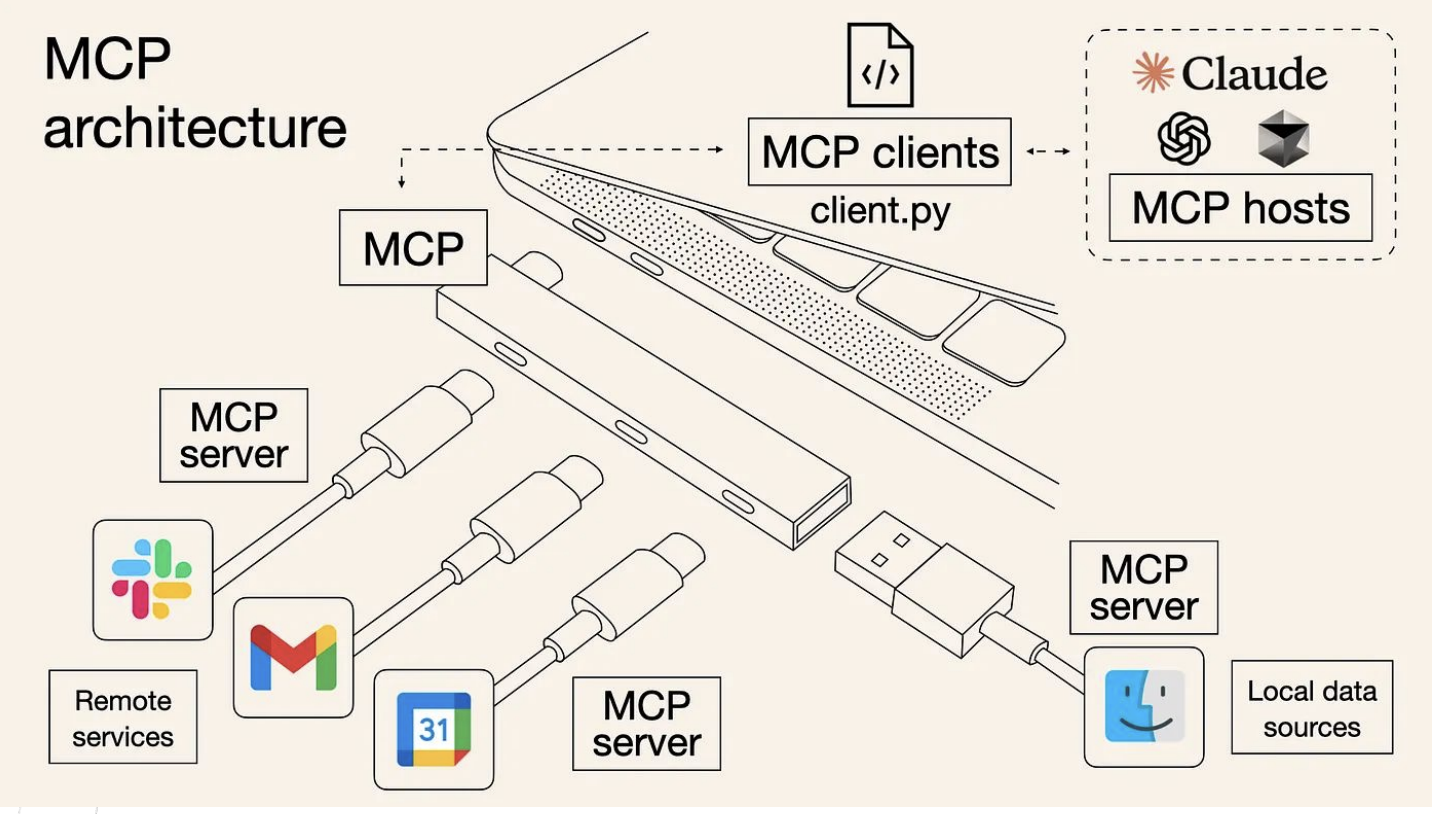
Meet the MCP Client in Memgraph Lab: Interoperability at the Core of AI Workflows
Last week, we introduced SQL2Graph powered by HyGM and Unstructured2Graph. These RAG tools are a part of Memgraph’s AI Toolkit designed to help you prepare structured SQL tables and unstructured documents for your GraphRAG pipelines built to give LLMs meaningful, connected context.
This week, we are taking the next step forward. The focus now shifts from building graphs to connecting them. With the MCP Client in Memgraph Lab, you can bring Memgraph into the same workspace as your other systems by connecting to multiple MCP servers. That too, directly from Memgraph Lab.
The goal is simple: interoperability. Our aim is make it easy for developers and AI teams to connect, fetch, and orchestrate data across multiple servers without writing custom integrations.
Now, let's dive deeper into why this matters.
The Problem: Too Many Siloed Systems
AI engineers and data developers rely an expanding mix of tools. Your customer data might live in Memgraph, transactions in Stripe, logs in Elasticsearch, conversations in Slack, and so many more tools. Each of these tools holds valuable data, but most of them operate in isolation.
To work with all of it together, developers need to write complex adapters, maintain custom code, and handle inconsistent schemas across systems.
This slows down experimentation and limits the ability to build real-time, data-aware applications where context needs to flow freely between systems.
What is missing is a shared interface that lets all these tools talk to each other.
The Solution: The MCP Client Inside Memgraph Lab
Memgraph Lab now includes a built-in MCP Client, compliant with the Model Context Protocol (MCP). This client acts as a bridge between Memgraph and any other MCP Server including GitHub, AWS, and Tavily so you can connect, query, and interact with these systems directly from Lab.

Each connection becomes an active data source that can exchange information with others in real time. Whether you are exploring entities in Memgraph or validating transactions from Stripe, you can now do it all from one interface.
Why Interoperability Matters
As AI applications evolve, interoperability is becoming essential. Graphs are powerful for providing LLM context, but they can only do this accurately when connected to real-time data sources.
The MCP Client turns Memgraph Lab into a "USB hub" where data from tools like Stripe, Elasticsearch, or Slack APIs can be combined with graph insights. Instead of moving data between systems, you can connect them, fetch what you need, and orchestrate complete workflows within one environment.
The result is a smoother workflow where every data source contributes to the bigger picture.
Inside the Lab: How MCP Client Works
The MCP Client is accessible directly inside Memgraph Lab. You can simply:
- Connect to any MCP Server using credentials.
- Discover available tools and capabilities each server exposes.
- Ask LLM your questions and let it fetch and extract data from different sources to come up with a context-aware response.
This reduces integration overhead. The entire experience is interactive and built to reduce friction between exploration, analysis, and experimentation.
MCP Lab Client in Action: Some Real-World Scenarios
Here are some possible real-world scenarios where MCP Client in Lab can truly come in handy:
Scenario 1: Fraud Detection
A financial analyst connects Memgraph and Stripe to correlate suspicious payment activity with connected entities in the customer graph.
Scenario 2: Log Correlation
A data engineer connects Memgraph and Elasticsearch to link user activity logs with interaction data, enabling deeper behavioral insights.
Scenario 3: Medical Research
A healthcare data scientist connects multiple MCP servers to link patient data from hospital databases, biomedical research repositories, and graph-based disease networks in Memgraph. This helps researchers explore complex correlations, identify potential treatment pathways, and gain faster insights from interconnected medical data.
Scenario 4: Social Media Analysis
A marketing analyst connects Memgraph, Twitter API, and Elasticsearch to study how user engagement, sentiment, and campaign reach evolve over time. By linking user graphs from Memgraph with live social metrics and search logs, the analyst can identify trending topics, detect community clusters, and measure the real impact of campaigns across platforms.
Looking Ahead
This launch is the foundation for a more interoperable Lab environment. Upcoming updates will extend the MCP Client’s capabilities with collaborative sessions, reusable orchestration templates, and deeper integration with LLM models.
Memgraph Lab is becoming more than a visualization tool. It is evolving into a connected workspace where your graphs, tools, and AI systems meet.
Get Started with MCP Client in Memgraph Lab
The new MCP Client in Memgraph Lab is available now. You can try it instantly on Memgraph Cloud which requires no setup. Simply sign up, launch a new project, and open Memgraph Lab from your dashboard.
From there, connect your first MCP Server and start exploring data across systems. For detailed steps, visit the MCP Client documentation to see how to connect, query, and visualize.